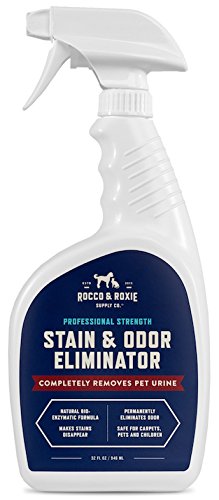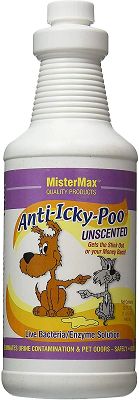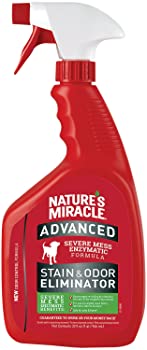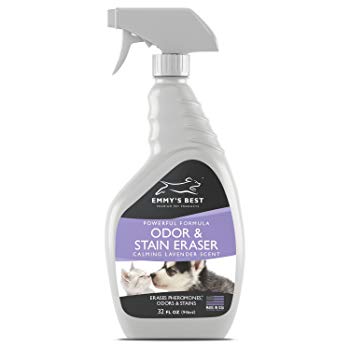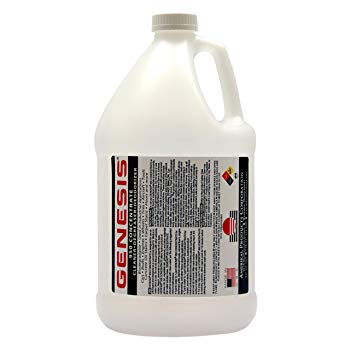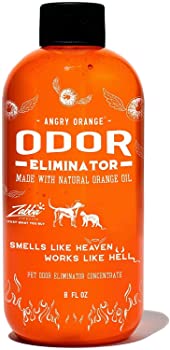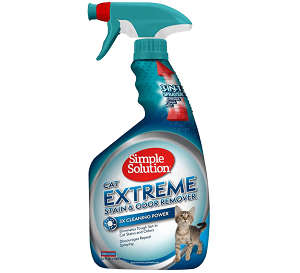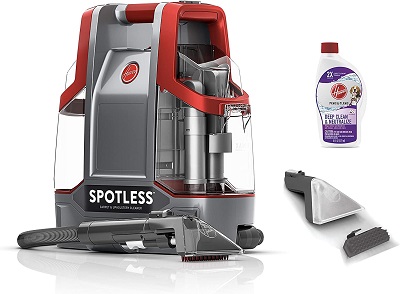
As a cat owner, you’ll find your cat has a way of putting you in some sticky situations – sometimes literally. The key to successfully removing pet stains is finding the right product and using the proper technique for each unique stain.
In this article, you’ll learn about the different types of pet stain removers on the market and which ones can eliminate common pet stains like urine, vomit, and feces.
At a Glance: Our Top Picks for Best Pet Stain and Odor Remover




Want a quick look at the products reviewed in this article? In the comparison table below, we’ve highlighted some of the most important features of each product. You’ll find more detailed information about each product later in the article.
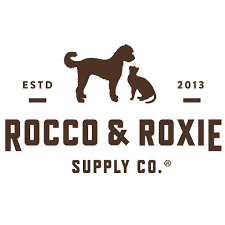
Rocco & Roxie Professional Strength Stain & Odor Eliminator
- An effective enzymatic cleaner
- Gentle and color-safe on all surfaces
- Comes with a money-back guarantee

Mister Max Unscented Anti Icky Poo Odor Remover
- Effective enzymatic action
- No added perfumes or fragrance
- Safe for both humans and animals
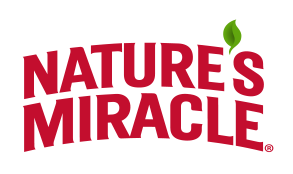
Nature’s Miracle Advanced Cat Stain and Odor Eliminator
- Enzymatic cleaner capable of eliminating odors
- Works on carpet, hardwood, linoleum, or tile
- Affordably priced under $15 for 32-oz bottle

Emmy’s Best Calming Lavender Scented Pet Odor & Stain Eraser
- Enzymatic cleaner work with most stains
- Safe to use on almost any surface
- Comes with a money-back guarantee

Genesis 950 Professional Concentrated Pet Stain and Odor Remover
- Effective on almost any surface
- Highly concentrated formula
- Appropriate for use in a carpet cleaning machine
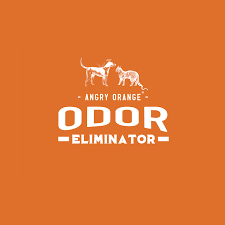
Angry Orange Industrial Strength Pet Odor Eliminator
- Effective against tough and set-in odors
- Leaves behind a citrus scent
- Concentrated formula makes up to 1 gallon

Simple Solution Extreme Stain & Odor Remover
- Enzymatic odor and urine remover
- Patented 3-in-1 sprayer for easy application
- Professional strength formula

Hoover Spotless Portable Carpet & Upholstery Spot Cleaner
- Portable and lightweight
- With self-clean technology
- Rubber nubs are antibacterial
Types of Pet Stain Removers
There are two main types of pet stain removers. One is enzymatic and the other type contains oxidizing agents. Some pet stain removers even feature a combination of the two.
Let’s discuss what each of these cleaning agents does and which pet messes they’re best suited for.
Enzymatic Pet Stain Removers
Enzymatic pet stain removers are like yogurt—beneficial microorganisms are the secret to their strength. Instead of populating the gut, however, the microorganisms in enzymatic cleaners populate the stained surface. These protease enzymes target protein-based molecules, which are the source of most odors.
If you’re dealing with pet urine—the worst of all pet stains—enzymatic cleaners are the only type of product that work reliably. The enzymes in the cleaner break down uric acid into carbon dioxide and ammonia, both of which evaporate into the air.
Again, there’s nothing else that can get urine stains out of your floor or upholstery.
You might see some initial results with other cleaners, but after the surface dries, the uric acid will recrystallize and the odor will come right back. Existing urine odors often act like a magnet, inviting your pet to repeat the undesired behavior and making the problem even worse.
The good news is not only do enzymatic cleaners work, but they are safe for all surfaces, including hardwood floors, carpet, rugs, upholstery, and concrete. Because every formulation is a little different and will interact differently with each surface, test it out on an inconspicuous area anyway.
Helping the Enzymes Do Their Job
Follow the package instructions precisely. Enzymatic cleaners are full of living organisms and these organisms thrive in a specific type of environment. Applying something else to the area like vinegar or baking soda will alter the environment and potentially slow down your enzymatic helpers.
When the container says to apply the cleaner liberally, do it. Don’t be stingy or cautious.
If the product comes in a spray bottle, you’ll usually want to remove the sprayer attachment and dump the liquid out of the bottle. You need to douse the area in cleaner, populating the whole space with a community of friendly microbes.
Allow the enzymatic cleaner to do its work in peace.
The enzymes will continue working until the area dries out. The more time they have in a warm, damp environment, the more time they have to break down odor-causing molecules and extract the stain. To prolong the life of your enzymes and give them more working hours, you might consider covering the area with plastic.
A plastic covering will lock in warmth and moisture, helping the enzymes to survive longer so they can spend more time in the affected area to do their work. Remember that cleaning with enzymes is like painting – you can’t rush it. Every application needs to dry naturally before you apply the next one. The slower it dries, the better.
Oxidizing Pet Stain Removers
According to the Cleaning Institute, all stains from bodily fluids like blood, vomit, and urine should be pretreated with an enzymatic solution. If possible, this enzymatic cleaner should be followed with cleaning in sodium hypochlorite or oxygen bleach and water.
Oxidation removes stains and does a great job of extracting most of the molecules responsible for discoloration. If a pet stain is discoloring the surface, oxidizing cleaners are your best bet for erasing it.
Though oxidizing pet stain removers often do a great job of removing stains, they may discolor your carpet or other soft surfaces. So, before you dump a gallon of cleaner on your carpet, test it in an inconspicuous area.
Do DIY and Homemade Pet Stain Removers Work?
Sometimes they do and sometimes they don’t. It depends what type of product you’re making and what type of stain you’re trying to get rid of. For most stains, a homemade cleaner will work if you make it from the right ingredients. That being said, other stains demand an enzymatic cleaner, and that’s something most people can’t make at home.
The DIY pet stain remover trinity: hydrogen peroxide, vinegar, and baking soda
When you’re browsing DIY cleaning solutions on Pinterest, these three household items are the ones you’ll see most often. A classic homemade carpet cleaner is a simple solution consisting of any of these three items, either separately or combined.
Baking soda is a natural deodorizer, vinegar is a disinfectant, and hydrogen peroxide is more oxidizing than chlorine.
When you rub vinegar into a pile of baking soda—or sprinkle baking soda on a splotch of vinegar—you make a little carpet volcano, which creates gas bubbles that could help to agitate the compounds making your carpet dirty. These reactions can remove visible staining, but they will have only temporary effects on the smell from a urine stain.
Each Pet Stain Is Unique. Here’s How To Remove the Three Most Common Types of Pet Stains
Removing Urine Stains
Cat and dog urine is a concentrated brew of proteins, acids, electrolytes, and other compounds.
Most of these compounds are easy to clean using typical cleaners like vinegar, baking soda, hydrogen peroxide, and other oxidizing products. The one that’s different is uric acid. It has a half-life of six years and is incredibly difficult to remove with anything other than an enzymatic cleaner.
If the stain is fresh, lucky you! New messes are relatively easy to clean.
Dab up what you can with a towel, then apply the enzyme cleaner as directed. If you have an old stain, use a blacklight to identify the source of the smell, then mark spots with sticky notes. Apply the cleaner liberally to those areas.
Older stains may need several applications (especially in carpeting), but it is possible to destroy an old cat urine stain. You just need a combination of a concentrated product, the right environmental factors, and persistence.
Removing Feces Stains
When faced with a fresh pile of feces (or worse – diarrhea), your first instinct is probably to clean it up as quickly as possible. What you may not realize, however, is that’s the exact wrong approach.
It’s recommended that you wipe off any excess then let the stain dry before attempting to clean it up.
If you try to clean up a feces stain while it’s still fresh, you’ll only make things worse. Instead, let it dry before applying any pet stain remover or doing any scrubbing. Use a cleaner that combines enzymatic action with oxidation.
Removing Vomit Stains
While you want to let feces stains dry before cleaning it up, vomit stains demand the opposite treatment. Vomit is usually relatively easy to clean, provided you catch it promptly and don’t let it set into the carpet fibers.
The acid in pet vomit can stain carpet quickly, so it’s important to wipe it all up as promptly as possible. Start it off by removing the chunks and any excess liquid, then use your enzymatic cleaner as directed.
Top 8 Best Pet Stain Removers on the Market
Relevant Content:
- Trinova Natural Pet Stain and Odor Remover Review
- Best Air Purifiers for Pet Hair, Dander, Allergies and Odor
- ODOR-X All-Purpose Stain and Odor Remover Review
Frequently Asked Questions
How do you remove dried pet stains?
The key to removing dried pet stains is to find the right cleaner for the job – generally speaking, enzymatic cleaners work best. Soak the area thoroughly and let the cleaner dry then determine whether you need to repeat the application.
Why does my carpet still smell like cat urine after cleaning?
Uric acid, a component of urine, is extremely stubborn and can be difficult to remove from surfaces entirely. If you use the wrong cleaner you might be able to get rid of the stain, but the uric acid will recrystallize and continue to cause odor. Your best bet is an enzymatic cleaner.
How do you make homemade pet stain and odor remover?
The three best ingredients for homemade pet stain and odor removers are vinegar, baking soda, and hydrogen peroxide. Try making a paste with baking soda and water then scrub it into the stain before pouring vinegar over it. A mixture of one-part hydrogen peroxide and one-part Dawn dish soap may work as well.
